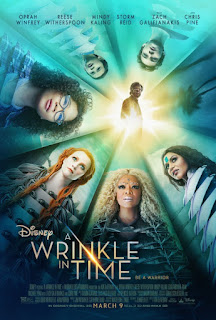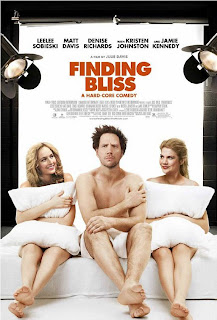Time Warriors: "A Wrinkle in Time" has its faults but also ambition, imagination and personality
A Wrinkle in Time (2018)
109 min., rated PG.
Ava DuVernay gets the chance of a lifetime to stretch herself as a filmmaker, having directed 2014’s Martin Luther King, Jr. portrait “Selma” and then 2016 racial-inequality documentary “13th,” and not only helm a big-budget Disney fantasy blockbuster but an adaptation of Madeleine L’Engle’s beloved 1962 novel (which was previously made into a chintzy 2003 made-for-TV film). Many have claimed the source material to be unfilmable, but DuVernay and screenwriters Jennifer Lee (2013’s “Frozen”) and John Stockwell (2007’s “Bridge to Terabithia”) come as close to nailing a screen treatment of L'Engle's novel as anyone probably ever will. Wildly ambitious as it is flawed, “A Wrinkle in Time” is bursting with an imaginative vision and balances lightness and darkness, like the kind of whimsical, offbeat live-action fantasy entertainment that rarely gets made anymore and that everyone’s young self would have watched in a bygone era back to back with 1984’s “The Neverending Story.”
It has been four years since bright, science-minded middle schooler Meg Murry (Storm Reid) has seen her father, Alex (Chris Pine), a scientist who wanted to shake hands with the universe and then disappeared after proving his theory of traveling through the galaxy with only one’s mind. Meg’s scientist mother, Kate (Gugu Mbatha-Raw), hasn’t lost hope yet, but it’s hard for both Meg and her prodigious 6-year-old adopted brother, Charles Wallace (Deric McCabe), when they’re being bullied at school. One evening, an unfazed Charles Wallace lets an ethereal, chipper woman named Mrs. Whatsit (Reese Witherspoon) into their family home, but before Mrs. Murry can call the police, Mrs. Whatsit mentions a “tesseract,” a fifth dimension that Alex was hoping to find before he disappeared. Not long after, Meg and Charles Wallace, along with smitten classmate Calvin (Levi Miller), are visited by Mrs. Whatsit and two other celestial guardians, Mrs. Who (Mindy Khaling) and Mrs. Which (Oprah Winfrey). They want to help her find her father on the dark planet of Camazotz, but Meg will have to find it in herself to make it happen before an evil darkness falls upon the universe.
As Meg’s emotional and dimension-hopping journey unfolds, “A Wrinkle in Time” imparts a wise and powerful message about self-worth, although it’s often delivered heavy-handedly through the words of wisdom by Mrs. Which. Along with that, Jennifer Lee and John Stockwell’s script sprinkles in a little more inelegant exposition than necessary, like when Charles Wallace conveniently overhears two teachers talking about the anniversary of Alex Murry, but at least Mrs. Which’s explanation of “The It,” a toxic evil that could wipe out all good on Earth and the rest of the universe, is handled with ample showing over telling. Once the three astral guides are dismissed and Meg, Charles Wallace, and Calvin are on their own, the film picks up steam and leads to some strange, vividly conceived through-the-looking-glass set pieces that are easy to get swept up in. From a nightmarishly cookie-cutter, 1950s-style suburban cul-de-sac with Stepfordized mothers, to a crowded beach welcomed by the creepily cheery Red (Michael Peña), our heroes head down an even more abstract and dangerous rabbit hole.
Storm Reid (2016’s “Sleight”) is a wonderful find with an accessible presence as Meg Murry, who’s worth following as a heroine little girls of color will imagine as themselves on screen. It’s refreshing to find a heroine who must embrace her “faults” and use her light goodness to overcome the darkness. With less screen time than everyone else, Chris Pine and Gugu Mbatha-Raw convey real warmth and parental love that ground the story as Dr. Alex and Kate Murry. When Meg finally reunites with her father, the actors create such a touching embrace that the viewer can feel a lump in his or her throat. 9-year-old newcomer Deric McCabe is almost too cutesy and precocious as brother Charles Wallace (whose full name is always uttered), but that precociousness gets a dark, sinister bent in the second half. In the role of “The Boy,” Levi Miller (2017’s “Better Watch Out”) is likable and wide-eyed as Calvin, who experiences a verbally abusive father at home, so it makes sense that he tags along with Meg on an adventure.
Major star power comes in the form of the three Missus, who all look on point, thanks to the suitably gaudy costume design by Paco Delgado and make-up by LaLette Litterjohn. As the Glinda-like Mrs. Whatsit, who continually speaks her mind that she has little faith in Meg, Reese Witherspoon is chirpy and daffy, and as Mrs. Who, Mindy Kaling is beatific if mainly there to spout quotes credited to everyone from Shakespeare and Gandhi to Outkast and Chris Tucker. And then there’s Oprah Winfrey. Seeing Winfrey standing thirty feet tall is admittedly goofy, but she commits all the way and has such a regal presence with her glittery lips and eyebrows, even if Mrs. Which gives the same brand of inspirational sermonizing as Winfrey’s real-life TV persona. Zach Galifianakis also shows up as the man-bunned Happy Medium, thankfully restraining his typical shtick a bit.
Ava DuVernay being the first woman of color to direct a live-action film with a production budget over $100 million is a celebration in itself, and “A Wrinkle in Time” earns points for being a family film with ideas and ambitions without pandering or playing things safe. For the sake of a feature-length film, the storytelling is often compressed and ungainly, but it’s not a deal-breaker. The small, quiet moments are intimate and affecting, and the big, wondrous moments are vibrant and dazzling most of the time; though one of the Missus morphing into a flying lettuce creature is a delightfully zonky sight, maybe some of the more overcooked CGI and green screen work is just better imagined in the reader’s mind than on screen. As a film that encourages one to embrace his and her faults, “A Wrinkle in Time” is young at heart but abundant in psychedelic, idiosyncratic charm, in spite of—or perhaps because of—its own faults. It’s more admirable when a film takes chances and shoots for the stars anyway.
Grade: B













Comments
Post a Comment